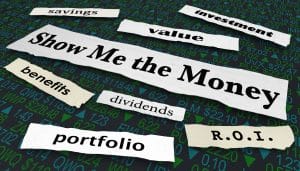
Chris Kuehl
Managing Director • Armada
The campaigns are over (at least for a few weeks) and we now have Trump’s return and the Republicans in control of Congress. What can we realistically expect going forward? For now, let’s consider the country’s changing approach to economic policy. Despite the intensity of the campaign, it is interesting to note how many similarities there are when it comes to economic policy. Both the GOP and Democrats are best described as “populists”—one from a left-leaning perspective and one from a right-leaning one. The roots of populism are in nationalistic responses to politics, economics, and social issues. This manifests in policies such as strict immigration control, strict trade protectionism, and general isolationism. It contrasts with concepts such as globalization, free trade, and engagement in global affairs.
In past years, the Democrats were more likely to espouse populist ideas as they objected to global trade, doing business with repressive regimes, and engaging in global conflicts. The GOP championed free trade; the role of the U.S. in global security; and a wide-open, consumer-centric economy. That is no longer the stance of the GOP. With Trump entering the White House, the U.S. will shift further away from globalization and toward protectionist policies.
Beyond the contests at the national level, there was much at stake in local elections. These often matter far more to businesses. The issues that come up repeatedly include the labor shortage, infrastructure support, and local enthusiasm for development. Such issues will be dealt with by state level politicians, local representatives, school boards, and others. Too little attention is focused on these politicians and most in the business community do not have contact with any of them. In recent years, many states have become impatient with the action at the federal level and have taken steps to deal with their own issues. There are now very wide differences in everything from tax policy to development support, training and education, and many other issues. This has contributed to a significant level of internal migration in the U.S. as people and businesses look for more benign environments.
A recent study asked how much a single person would need to earn in each of the 50 states to live a “comfortable” life. In California that would be $190,000, but in North Dakota it would require $50,000. Much of the internal migration has been to the Southeast and the Midwest, and these two areas also lead the pack when it comes to reshoring efforts. The draw has been a lower cost of living coupled with more state and local attention paid to training, infrastructure, and development support. The manufacturing community has heard a lot of pious declarations regarding its importance, and every politician has mouthed the same supportive comments. Now it is time to make good on these promises, and much of that responsibility will fall to leaders at the state and local level. They need to be educated, so they can shift their focus from emotional social issues to the more prosaic concerns such as training, infrastructure, energy, and innovation support.
What Trump and the GOP Faces in 2025
To start with, there is the need to extend the growth pattern the U.S. has enjoyed over the last few years while at the same time adapting to the very rapid changes that have been introduced by technology and innovation. Part of this process involves removing the barriers that have inhibited the expansion of economic growth in the U.S. Some of these are regulatory and some are related to tax policy, but the most consistent issues have included labor shortages, poor infrastructure, commodity shortages, and lack of government support for R&D. There also has to be a focus on adopting and exploiting the new technologies involved in artificial intelligence, energy, health care, defense, and even food production.
Another challenge is the debt and deficit. The U.S. is now running a debt that is 120% of its GDP, and that is unsustainable. Debt service is now costing the U.S. close to $500 billion a year, and that category is the fifth largest in the total federal budget (behind only Social Security, Medicare, Medicaid, and the military). Neither candidate discussed this at all. If anything, both made suggestions that would make the situation worse—tax cuts when more revenue is needed, and more spending programs when the U.S. can’t pay for the ones it already has. There is no more opportunity to nibble away at the debt. All that is left is radical action on spending cuts and radical changes to taxation. Unfortunately, no politician is willing to touch this with a 10-foot pole.
Yet another issue is the role of the US in the world. There is no appetite for the U.S. to continue the role of world policeman. The attempts in the last few years have been failures, but the U.S. now plays a profoundly negative role in global economics. The chosen weapon has been economic, and the U.S. now has sanctions against two thirds of the nations in the world—three times as many as any other country. This is forcing nations away from the dollar and away from the U.S. The world has become fragmented, and alliances have deteriorated to the point that there is little cohesion on even acknowledged common problems. The U.S. is still the only nation with the clout to lead, but it has been walking away from most of these challenges.
The last challenge is communication. There has been nothing resembling a cohesive position on economic issues, and that confuses markets and consumers. It seems that nobody quite knows who is in charge or what they plan. There has to be far less political pandering for votes and more actual leading in a stated direction. To be frank, there was little in the campaign rhetoric that provides a clue as to what happens next. It can only be assumed that these issues are addressed, but they have been issues for years and precious little progress has been made.
Recent Posts
- Stability in Uncertain Times: Insights on Small Business Performance and Market Trends March 26, 2025
- Economic Reconnaissance | Now Comes the Hard Part February 3, 2025
- How Can the CMI be Used for Performance Insights? January 6, 2025
- Economic Reconnaissance | Economic Growth During the Next Presidency December 3, 2024
- How Credit Managers Can Step into Executive Leadership November 13, 2024
- New California law extends consumer debt protections to small businesses October 15, 2024








